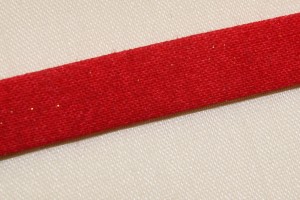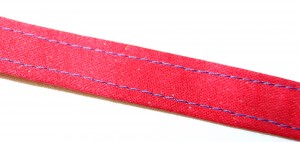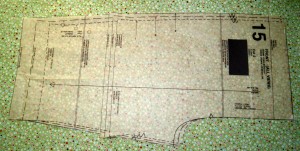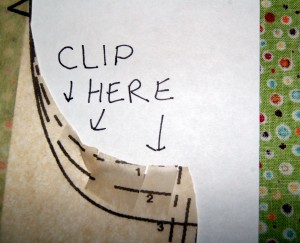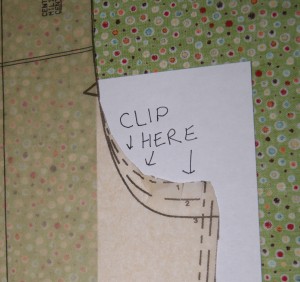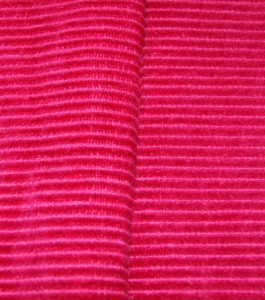Making straps does not have to be a struggle and you don’t always have to follow the directions given within your pattern. That’s what I find so inviting with sewing is that you can “think” outside the box.
I personally do not like to sew straps with right sides together because after you have sewn your strap, you do have to turn it to the right side. There are some wonderful tools out there to help you when turning a strap but here’s a method to make a strap without having to bother with the turning process.
First, determine the finished width of your strap – 1/4″ or 1/2″ or 1″ – or a width that will work best for your project. Say you have decided to make a 1/2″ wide finished strap, so now you have to figure out the actual cut width of your strap. For example, if you want a 1/2″ wide finished strap, you need to add a 1/2″ width of fabric to each side of your strap plus add another 1/2″ to the actual width to compensate for your folding, making your cut width 2″ wide.
Finished strap width 1/2″ + 1/2″ for fold + 1″ for sides = 2″ wide cut strap
This calculation is the same for whatever strap width you want. For a finished 1/4″ wide strap, you would add 1/4″ to each side of your fabric plus 1/4″ for fold, making a cut width of 1″ wide; for a 1″ wide completed strap, you need to add 1″ of fabric to both sides of your strap plus 1″ for fold, making for a cut width of 4″ wide.
You just double your finished strap width and add that calculation to your finished width and be sure to add another finished width to that total to compensate for the fold and this will determine the width of your strap pattern to cut from your fabric.
Finished width + finished width for fold + doubled finished width for sides = Cut width
Your strap length can be the length used from your specific pattern piece or whatever length you decide would work best for your particular project.
Once you have decided upon your width and length for your strap, go ahead and cut out the strap from your fabric. Next step is to have your iron ready – set your iron temperature to the setting that will work best for your fabric. Now press your strap piece with wrong sides together forming a crease right down the middle of your strap.
Let cool and fold over each side edge to meet at that center crease and press in place. Again, let cool to the touch and fold your strap in half along that creased line and press once more.
Now head back to your sewing machine and top stitch close to your strap edge. You can stitch just along the open edge to close it or you can sew a top stitch line down each side of your strap. Personal preference for top stitching.

Top stitched edge closed (used contrasting thread for example)Example of top stitching along both edges
Your strap is completed and can now be sewn into place within your project. Give this method a whirl next time you need to make a strap for anything!!
HAPPY CREATING!!
Disclaimer: This post contains affiliate links – “small commission earned”



